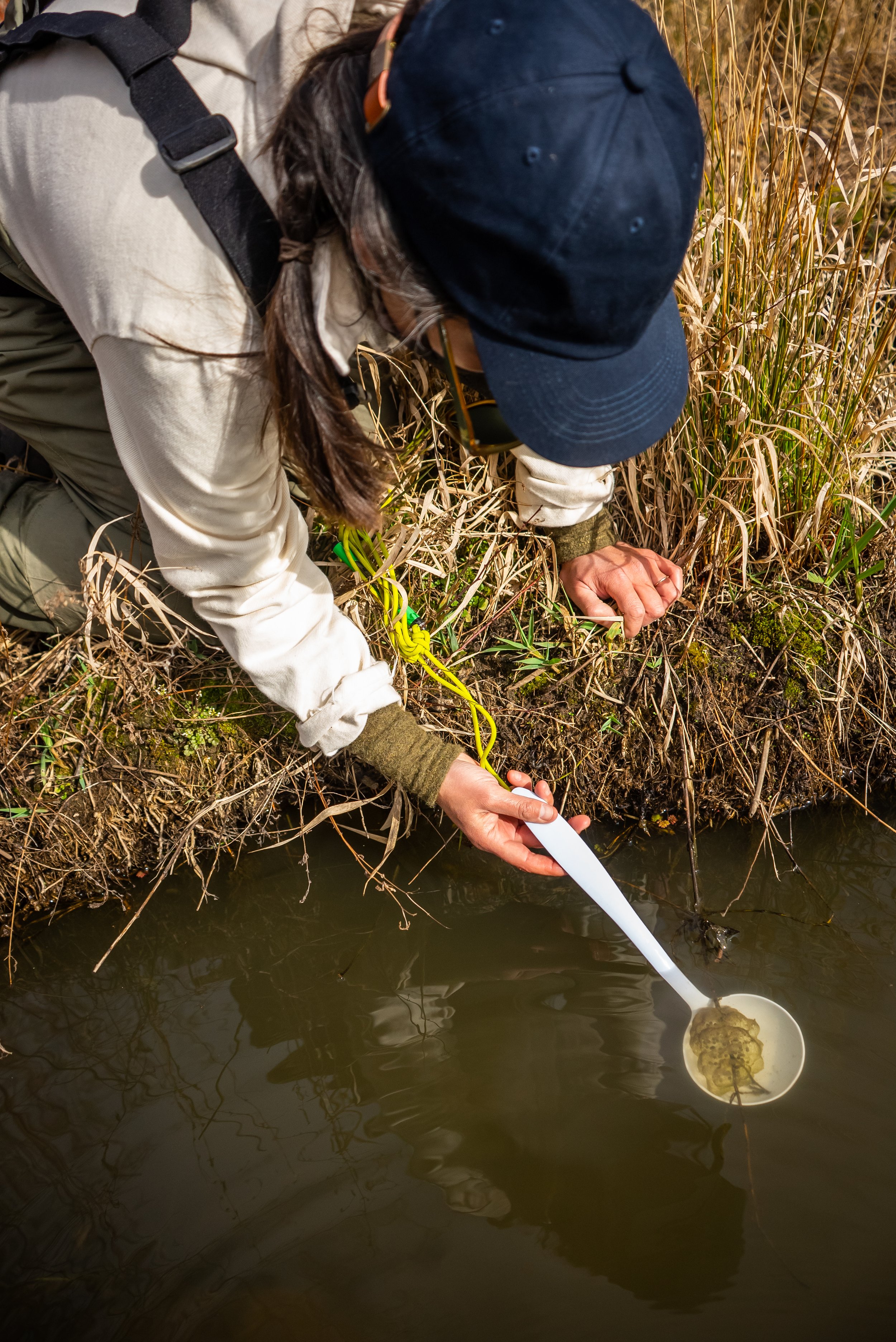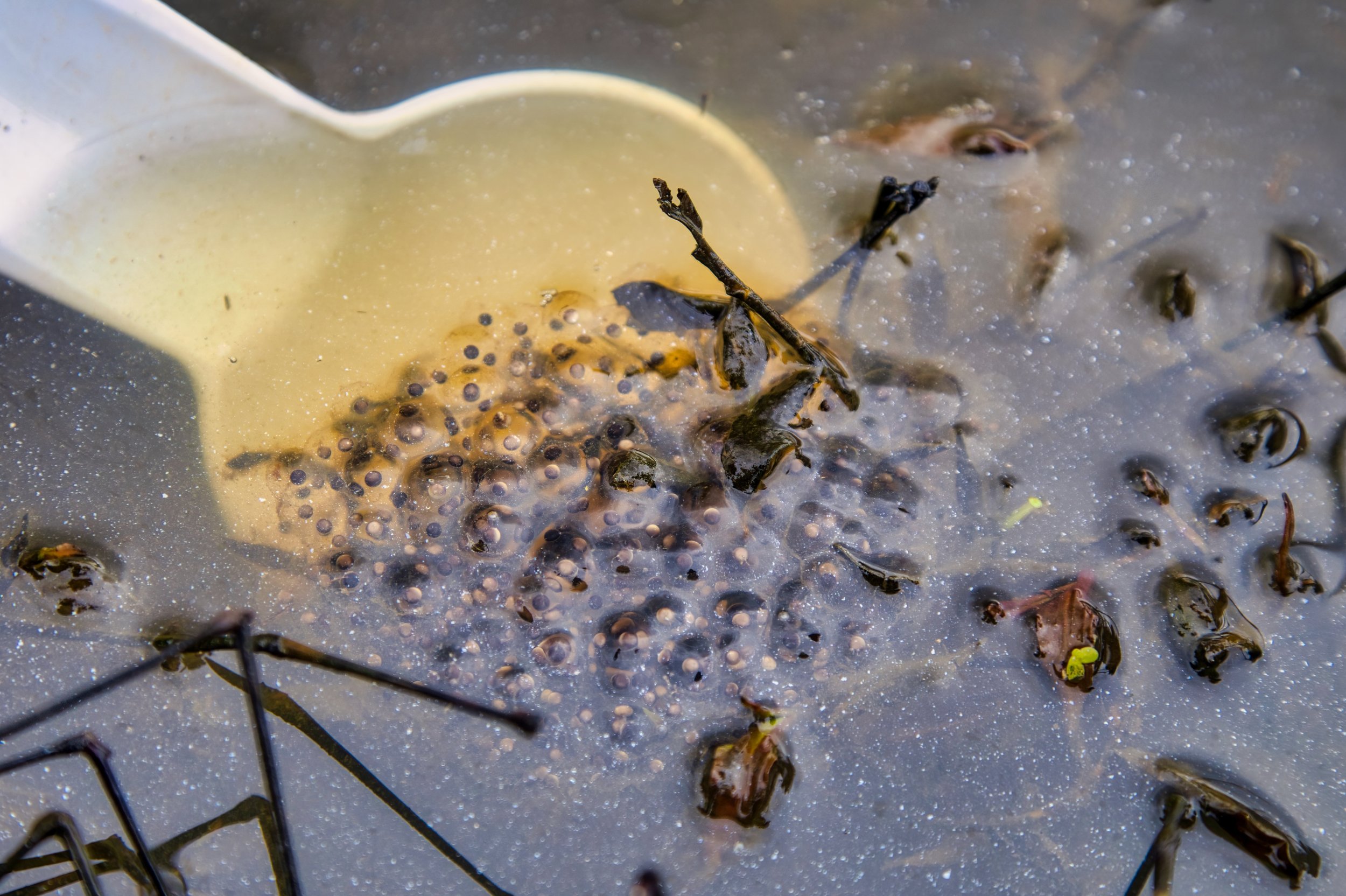Community Science
The 2025 Beaver Survey Season is starting in September! Virtual Training will be Friday the 5th. Sign up here!
Volunteers on a community science survey gather to look at an egg mass.
Photo Credit: Bruce Block
Community Science opportunities focus on what the land can teach us. They first happen in February when frogs and salamanders start traveling to lowland ponds to breed. The Wetlands Conservancy is one of many partnered organizations tracking amphibian presence in the Pacific Northwest. Amphibians are highly sensitive indicator species whose ability to thrive depends on clean water and abundant food sources. If they’re there, chances are the water is clean enough for their survival and therefore others too, including humans. We offer annual training and guided surveys so that teams of community scientists can gather this data. Amphibian surveys are by far the most immersive volunteer opportunities available. We spend hours hip-deep in the water, rain or shine, poking at any and everything we find to locate and record the egg masses. We find plenty of masses, but we always find so much more! From footprints to bird nests to scat to mushrooms to bones to burrows - every survey is a scavenger hunt!
Between February 8th and April 4th of 2025, TWC community scientists performed 29 amphibian surveys within 10 segments of 7 distinct wetlands. We searched 43 miles of potential breeding habitat to find a total of 1937 frog and salamander egg masses. Generally, Red legged frog and Pacific Chorus Frog breeding trended down this year, while Northwestern and Long toed Salamander breeding trended upwards.

A NW Salamander egg mass. We use spoons to help us get a closer look and help us identify which amphibian it belongs to.

A Red Legged Frog egg mass.
September brings more community science with beaver surveys. Teams of trained community scientists watch the leaves change color while surveying along streams and waterways listening for the tell-tale sound of water spilling over a dam, and sniffing the air for the musky odor of a scent mound. Unlike amphibians, beavers don’t require a fully functioning wetland to make it their home - they MAKE the wetland themselves. Active all year round, beavers build dams to slow and spread out water. They also dig channels, fell trees, build dens and lodges, and generally turn entire landscapes into lavish biodiverse habitats. Beavers do more practical wetland restoration than humans ever could, and The Wetlands Conservancy collects data on the structures they build so that we can anticipate hydrological changes as well as improve our own management practices. We have a lot to learn about habitat stewardship from beavers.
Registration is open for the 2025 Beaver Survey Season! Click here to RSVP for virtual training on Friday, September 5th from 6-7:30pm



